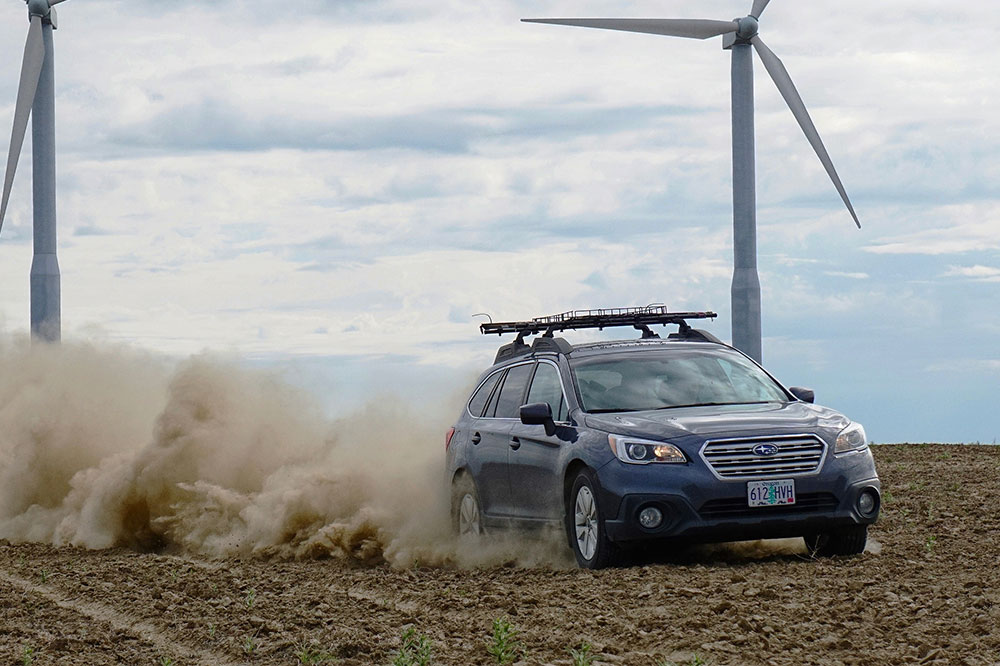A buying guide to the best new and used SUVs
SUVs have become such a popular choice in the country that it’s giving the sedan market some tough competition. Stylish as well as practical, SUVs have a lot to offer, like plenty of space, great cargo arrangements, and even towing capabilities. But choosing the best SUV is easier said than done when numerous auto manufacturers offer terrific features at a steal of a price. If you’ve been thinking about buying an SUV but don’t know where to start, you’ce come to the right place. Herein, we’ll discuss some key parameters that you need to scrutinize while shopping for an SUV.

Factors to consider before buying an SUV
- Type
The great thing about SUVs is that you’ll find a lot of variety fitting your budget. Sub-compact, small, midsized, and large SUVs are four types that you can choose from. Sub-compact is perfect if you’re looking for great performance and don’t mind limited cargo storage. On the other hand, small SUVs come with flexible cargo space and limited yet decent off-road capabilities. Midsized and large models are better if you seek more cargo space, robust towing capability, and uncompromised off-road functionality.
Typically, SUVs can accommodate at least five individuals, But some midsized and full-sized variants might have an additional row that can ramp up the capacity up to eight persons. The SUVs with a third row might lack bigger cargo spaces when the seats are occupied. Although, when empty, they can be folded to make additional room for luggage.
While shopping for an SUV, you must check how much cargo space it can offer. Some models free up the entire space behind the driver’s seat by rendering foldable second and third rows. Another convenient option is a third row with a split design, wherein a part of the seat can be folded for storing luggage and the other half remains free for seating. A few luxury models even come with air suspensions to ensure fuss-free loading of cargo.
FWD vs. AWD vs. 4WD
Most manufacturers use front-wheel drive in SUVs with the availability of an all-wheel drive option. Alternatively, truck-based SUVs a rear-wheel-drive configurations that come with the option of four-wheel drive.
All-wheel- and four-wheel-drive power all the wheels; though they sound the same, they’re not. A lighter-duty system, AWD remains engaged and quickly changes the power distribution between the front and rear wheels any time you want. AWD is suitable for driving in bad weather and on dirt roads.
Due to low-range gearing, few SUV models come with true 4WD when it comes to tackling off-road terrains like steep dirt hills. If you’re looking for a 4WD configuration, look for SUVs that offer full-time instead of part-time 4WD. This is because part-time 4WD mode on dry pavement might not be to smoothly deliver power distribution between the front and rear wheel that could potentially lead to mechanical damage.
Safety and advanced driver-assist technologies
Any SUV should have these essential safety features mentioned below:
- FCW (forward collision warning)
This technology warns the driver about an imminent collision with another vehicle or object in its way via an audible, a visual and/or tactile alert. - AEB (automatic emergency braking)
It responds to an impending collision by handling brakes if the driver fails to react in time. - BSW (blind spot warnings)
BSW notifies the driver if there’s another vehicle alongside that is difficult to spot by monitoring the SUV’s flanks.
If you want more safety arrangements, then telematics systems that alert emergency services when airbags deploy, lane departure warning system, lane assist, and rear cross traffic alert are some other advanced auto technologies that you might want to inquire about before settling on a deal.
Towing
For massive towing capacity, truck-based SUVs are the ideal choice. Large SUVs can tow nearly 9,000 pounds, while midsized models can lug only up to 5,000 pounds. So, if you have a boat or a camper to tow, then pay special attention to the SUV’s towing strength.
New vs. used SUVs
The used car market in the country has exponentially grown in the past few decades. Naturally, you might feel indecisive while figuring out whether a new or used model is the best choice.
A brand-new SUV comes with a bunch of pros, like the recent safety and engineering improvements and bumper-to-bumper factory warranty. Also, don’t have to fret about any hidden damages or possible maintenance issues that could empty your pockets. More importantly, the financing rates for new SUVs are much lower than those for ones.
Alternatively, the major disadvantage of buying a new SUV is that they instantly depreciate. In fact, they almost drop half their value in the first 2 to 3 years. Besides, if a buyer pays a small down payment, they will owe more than the actual worth of the SUV to the lender.
A used SUV, on the other hand, will save a lot of money. As mentioned earlier, the used car market is huge right now, so you have plenty of options to choose from. But you should be cautious of SUVs that have been upgraded heavily for off-road use. Improvements such as oversized wheels and tires, steering and suspension modifications can impact the way an SUV behaves during unexpected situations, like an emergency lane change to avoid an accident. Furthermore, inept installations can contribute to quicker deterioration and cost massively in repairs. So before you pick a used SUV, give it a thorough check also ask the seller about the crucial details.
Top SUVs of 2020
Here are the popular SUVs of 2020 listed in no particular order.
- 2020 Volvo XC40
- 2020 Kia Telluride
- 2020 Cadillac XT6
- 2020 Chevrolet Trax
- 2020 Honda CR-V
- 2020 Hyundai Palisade
- 2020 Ford EcoSport
- 2020 Mazda CX-3
- 2020 Jeep Renegade
- 2020 Chevrolet Traverse


